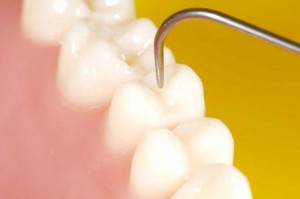 Whereas in the olden days, it was common for people to neglect going to the dentist or to simply be unable to go, nowadays, there are plenty of practicing dentists around who can assist patients with maintaining their dental health. Going to the dentist at least once or twice a year is an important part of maintaining not only one’s dental but one’s overall health. However, if you haven’t went to the dentist in a while, then you might find yourself with much plaque and other matter affixed to your teeth. Fortunately, there are dental procedures to assist with this dental situation and more, such as a debridement.
Whereas in the olden days, it was common for people to neglect going to the dentist or to simply be unable to go, nowadays, there are plenty of practicing dentists around who can assist patients with maintaining their dental health. Going to the dentist at least once or twice a year is an important part of maintaining not only one’s dental but one’s overall health. However, if you haven’t went to the dentist in a while, then you might find yourself with much plaque and other matter affixed to your teeth. Fortunately, there are dental procedures to assist with this dental situation and more, such as a debridement.
What Is a Debridement?
A debridement is the procedure that is used to remove thick amounts of plaque and tartar from the teeth. Not to be confused with a regular teeth cleaning procedure, this one is a bit more intense since it is designed to target more buildup on the teeth than a regular cleaning procedure. In many cases, a debridement is the first phase of a periodontal treatment, especially when the patient has so much plaque and tartar buildup on his or her teeth that the dentist cannot properly check for tooth decay, gum disease or infections in general.
How Is a Debridement Performed?
A debridement can be performed via a couple of methods. One method consists of the dentist using hand instruments to scrape away the heavy plaque, while another method consists of the dentist utilizing an ultrasonic light to break down the buildup. In the case where the dentist decides to employ the use of an ultrasonic device, the device is one that uses high frequency vibrates and water to loosen up the plaque and tartar from the surface of the tooth.
Dental Phobias and Debridement
 The amount of time that it takes to perform a debridement is typically quite a bit longer than that of getting a traditional tooth cleaning. This is because the plaque and tartar buildup on the teeth is much more extreme than usual. In many cases, the reason why an individual’s teeth have built up to this point is because they harbor some sorts of dental phobias. Therefore, they kept procrastinating on visiting the dentist. However, in order to make the process more comfortable for such patients, dentists might apply a numbing agent to the area to help alleviate any pain that the patient might feel. For those who suffer from more extreme phobias, a local anesthesia might be used to further put them at ease and make them more comfortable.
The amount of time that it takes to perform a debridement is typically quite a bit longer than that of getting a traditional tooth cleaning. This is because the plaque and tartar buildup on the teeth is much more extreme than usual. In many cases, the reason why an individual’s teeth have built up to this point is because they harbor some sorts of dental phobias. Therefore, they kept procrastinating on visiting the dentist. However, in order to make the process more comfortable for such patients, dentists might apply a numbing agent to the area to help alleviate any pain that the patient might feel. For those who suffer from more extreme phobias, a local anesthesia might be used to further put them at ease and make them more comfortable.
What to Expect After a Debridement
After a debridement is done, patients can expect their dentists to want to schedule a follow-up appointment so that he or she can then properly assess the patient’s oral condition. Patients might experience a bit of soreness following a debridement, but the pain is relatively moderate, if there’s any at all. However, it should be noted that if a patient’s gums are already inflamed prior to the debridement, then his or her gums might bleed throughout the procedure. Additionally, it’s not uncommon for the teeth to be sensitive to hot or cold temperatures following the procedure since the teeth will not have their plaque covering anymore, and they might still be sensitive from any vibrating water that was applied to them. Additionally, since this is usually the first phase of periodontal treatment, patients shouldn’t be surprised if their dentists then recommend that they need a root scaling or planning or further treatment for gum disease.
Preventing the Need for a Debridement
Patients who don’t want to have to undergo a debridement can take a few preventative measures to prevent the need of one. The most important measure is to ensure that one brushes and flosses at least once a day and that one goes in for dental checkups to have his or her teeth professionally cleaned at least once a year. Avoiding acidic foods, sugary foods, tobacco products and alcohol can also assist with preserving the enamel of the tooth.
References:
Colgate. “Debridement.” Retrieved on May 16, 2016, from http://www.colgate.com/en/us/oc/oral-health/conditions/plaque-and-tartar/article/debridement.
RDH Mag. “A Simple Lesson.” Retrieved on May 16, 2016, from http://www.rdhmag.com/articles/print/volume-25/issue-8/feature/a-simple-lesson.html.
Colgate
300 Park Ave.
New York, NY 10022
212-310-2000
www.colgate.com
RDH Mag
1421 S. Sheridan Road
Tulsa, Oklahoma 74112
800-331-4633
www.rdhmag.com
Images:
http://valleydental.us/wp-content/uploads/2012/12/teethprobecr1.jpg
http://www.affinitydentalclinics.com/wp-content/uploads/2015/03/Affinity-Dental-Debridement-637×423-300×199.jpg